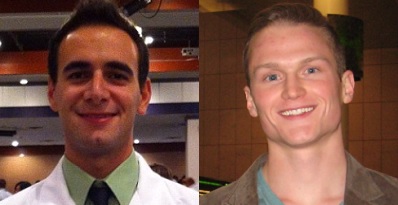
JURSI students getting national experience
An integral part of a medical education is allowing students the opportunity to get hands-on experience in a variety of settings in the hopes of helping them to decide on the specialty that most interests them.
By Marg SheridanAn integral part of a medical education is allowing students the opportunity to get hands-on experience in a variety of settings in the hopes of helping them to decide on the specialty that most interests them.
For a lot of students at the College of Medicine, that decision can be made easier by the programs clinical clerkship rotation, or Junior Undergrad Rotating Student Internship (JURSI) offered to third and fourth year students.
“JURSI is basically our chance as medical students to be involved in clinical experience,” said Johnathan Tomas. “It’s a year and a half worth of experiences done in different rotations and that includes a lot of the core stuff like family medicine, surgery, pediatrics, psychiatry – just everything to complete us as a whole to allow us to go out as family doctors.”
The current class of JURSI students, which includes Tomas and classmate Quinten Paterson, started their placements about four months ago, and for some that has meant the start of a cross-country adventure to experience practice at a wide variety of hospitals and clinics.
“I’m in Toronto right now,” explained Paterson during an interview in mid-April. “But I started off in general surgery in Saskatoon, and in Winnipeg I did orthopedic trauma, then I went to Ottawa and worked in the heart institute there and did cardiology.
“I’m at Sunnybrook Hospital in Toronto now doing emergency medicine - So I’ve encountered a very broad range of things both surgical and medical, and it’s really been great to see how different hospitals are run, and how different specialties work.”
Working in emergency medicine has long been a goal for Paterson, a Saskatoon native, and his JURSI experiences at Sunnybrook have just reinforced why he decided to study medicine in the first place.
“Last week I saw a patient that was in the emergency department that was quite concerned, and by the end of it – it was probably the best feeling I’ve had in clerkship – they said ‘thank you, you’re going to be a good doctor’ and that was just so encouraging.”
For Tomas, who hasn’t completely decide upon a specialty, the ability to gain clinical experience in a broad range of subjects is what makes the program important. After spending several weeks in both Halifax and Ottawa, he too found himself working at Sunnybrook – though at the Lyndhurst Centre, a rehabilitation facility – where he started to contemplate physiatry.
“Here with spinal cord injury patients - they all have interesting stories, and their life has been flipped upside down,” Tomas explained regarding his burgeoning interest in rehabilitation. “Their outlook on life, considering the position they’re in right now with having to relearn the basics of things we take for granted, is incredible.
"It's inspiring for me to listen to what they're going through because they're spending months living in the hospital to relearn activities like eating, transferring, and dressing- and doing so with a positive attitude. Being able to be a part of their recovery is an honour."
“I think the JURSI portion of medical training is the best part of medical school,” continued Paterson. “In pre-clerkship when we were doing a lot of classes I think by that point a lot of students are really starting to get worn out. JURSI is really the time when the rubber hits the road and everybody has to integrate their clinical skills and medical knowledge and teaching others and seeing patients, and it’s such an awesome experience to finally get to do what we came into med school to do.”
The sentiment is echoed by Tomas, who also feels that the opportunity to get firsthand experience through the JURSI program has been the highlight to his education to this point.
“To see real people affected by real things, real disease we learn about rather than reading about these things in textbooks and not really being able to fully engage in it – it becomes more memorable when you see someone really affected by it.”
